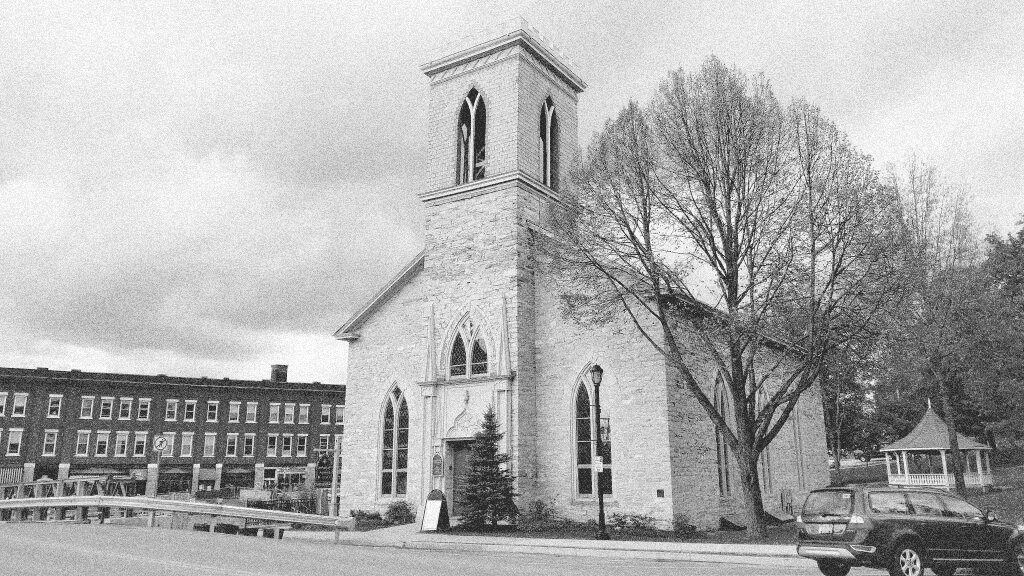
History of St. Stephen’s
The First Episcopal Society of Addison County was organized in December 1810 by 41 residents of Middlebury and neighboring towns. For the next decade and a half, the Society met and held services in local taverns, offices or members’ homes. Morning Prayer was the most frequent form of worship, with the Eucharist celebrated on occasion by itinerant priests passing through Middlebury.
By the mid-1820s, the Society’s membership had grown into a parish known by the name of St. Stephen’s, and was prepared to call a permanent priest and erect a church building. The first settled Rector of St. Stephen’s, beginning in 1823, was the Rev. Benjamin Bosworth Smith, a Rhode Islander who was a protégé of the Rt. Rev. Alexander Griswold, Bishop of the Eastern Diocese (all of New England except Connecticut). Smith served at St. Stephen’s until 1828. Later in his life, he became Bishop of Kentucky, and from 1868 until 1884, was the Presiding Bishop of the Episcopal Church.
In 1825, a special Town Meeting in Middlebury granted permission to the congregation to erect a new building on the Town Green. Plans for a stone building in the Gothic style were drawn up, and construction began in April 1826, using local materials and labor. St. Stephen’s Church was consecrated by Bishop Griswold in October 1827 and the first worship service were held in the congregation’s new home. In 1835, a bell cast by the Revere Copper Company of Boston, a firm founded by Paul Revere, was purchased and hung in the waiting church belfry.
Several of St. Stephen’s early members were leaders in public and community life in Middlebury and Vermont, among them Daniel Chipman (1765-1850) Speaker of the Vermont House of Representatives, member of Congress from Vermont, and charter trustee of Middlebury College; Horatio Seymour (1778-1857) United States Senator from Vermont, long-time trustee of Middlebury College, and Senior Warden of St. Stephen’s for more than 40 years; and Henry Sheldon (1821-1907) collector and founder of the Henry Sheldon Museum of Vermont History, as well as St. Stephen’s organist for 34 years.
For our church’s first hundred years, St. Stephen’s alternated between periods of prosperity and poverty, at one time supporting missions in Shoreham and East Middlebury, but at other times unable to afford the regular services of a priest. However, as the previous paragraphs show, the church has persevered, refurbishing and remodeling our building with commendable regularity.
In the 1950s, faced with a crumbling foundation and low funds, the women of the parish instituted the first Peasant Market in order to raise money for necessary repairs, while the men founded the St. Stephen’s Construction Company to do the work. Our parish hall and kitchen were excavated by hand and prepared for service in 1951.
In the mid-1990s, St. Stephen’s undertook a successful capital campaign, Stones for St. Stephen’s, to further add to and remodel the church building. Consecrated in 1998, our building now houses a new chapel and columbarium, an elevator, meeting rooms, accessible office space and restrooms on every floor.
A multi-year effort to restore and replace the historic stained-glass windows in the nave, called the Let There Be Light campaign, was completed in early 2014. An entirely new stained glass altar window, portraying the spiritual significance of the Vermont landscape, was consecrated in 2017. Our historic building continues to present challenges of upkeep and modernization. The list of projects required to maintain the beloved building that serves our needs for parish worship and community service only grows longer each year!
The physicality of any religious building must be secondary to its inner spirit. While St. Stephen’s is closely identified with its prominent physical space in the center of Middlebury’s downtown, its people cherish the bonds of spiritual community formed in their shared commitment to worship, learning, and service.
Past Rectors of St. Stephen’s Episcopal Church Middlebury, Vermont


